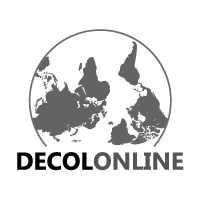The growth of Information and Communications Technologies (ICTs) throughout the world is undeniable. They have transformed the way we live as they are central to the way people connect today.
We can use online spaces to approach people for a variety of purposes depending on the type of contacts we have. These people can be family, friends, associates, and even plain strangers. The way we approach communicating with other humans highly depends on how well we know them or how much we want them to know us.
Tufekci (2017) notes that through social media, people can announce significant events like births, marriages, and deaths to a broad range of people, including many with whom they have weak connections, but perhaps can maintain relationships that were never strong in the first place. Without digital assistance, such relationships might have withered away over time. For people seeking political change however, the networking that takes place among people with weak connections is especially important. People with strong connections likely already share similar points of views, making them less likely to surprise them when they are expressed on social media. Weaker connections may be composed of people with varying political and social ties. Also, weak connections may create bridges to other clusters of people in a way strong connections do not (p. 21). Communication technologies enables us to reach those connections whether they are weak or strong to address our views. Our online audience becomes limitless in terms of who you want to reach and what you want to state, debate, or persuade.
One of the consequential effects of online communications can vary. ICTs can deliver major changes in society because of its capacity to connect and mobilize the masses, but it can also spread misinformation and falsehoods in a way we have never seen before. An online user can choose to behave on the Internet the same way he or she would behave in real life, whether is good or bad. As O’Donnell and Sweetman state (2018), “communications technologies as neither intrinsically good or bad – rather, their impact for good or bad depends on the intent and perceptions of the user” (p. 224). In other words, ICTs are not responsible for what happens on the Internet, instead we as human beings are responsible for that, and should be cognizant of how much good or damage we can cause with our actions online.
Having said that, we could imagine that having access to ICTs is like having a megaphone that speaks to society. The more affluent you are, the more devices you can buy to enable your voice to be heard. Unfortunately, not everyone in the world has that luxury. According to Heeks (2017), the leading digital divide relates to income: women, those with less education, older people, ethnic minorities, the disabled, and rural populations are all poorer on average than their mirror images (p. 87). In a way, those who are richer benefit most from ICTs giving them the platform they need to share and connect with those who are within their circle, thus reinforcing inequality and the way we view the world.
There is no doubt the social connections that the Internet facilitates brings our communities together, but we need to pay closer attention at the digital divide that it exist when it comes to accessing ICTs. People that come from different backgrounds may have different points of view from us and therefore, think differently about certain issues. Tufekci (2017) mentions that people in movements still try to find and connect with people like themselves, get attention for their cause, convince people of their ideas, seek legitimacy and strength, and hope to bring about change (p. 131). Because of that, it is important not to get stuck in an echo chamber because true social change is achieved with the input from everyone involved.
What do you think? Drop us a line or two in the comments below and tell us your thoughts about the matter.
References:
Heeks, R. (2017). Information and Communication Technology for Development (ICT4D).
Abingdon: Routledge.
O’Donnell, A. & Sweetman, C. (2018). Introduction: Gender, development and ICTs. Gender & Development, 26(2), 217-229.
Tufekci, Z. (2017). Twitter and Tear Gas. New Haven: Yale University Press.
Photo Credit:
Clay Banks on Unsplash.


